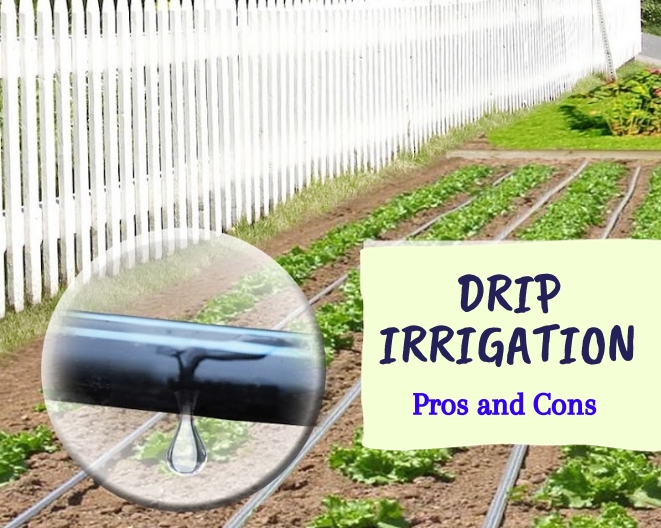In an era marked by globalized food supply chains and increasing consumer demands for a diverse array of products year-round, the safety of our food has never been more critical. With outbreaks linked to biological hazards making headlines, a pertinent question emerges: Which food safety practice will help prevent biological hazards? This comprehensive article delves into the complexities of food safety, shedding light on evidence-based practices to safeguard against biological contaminants.
Practices to Prevent Biological Hazards
Biological hazards in food encompass a range of microorganisms and their toxins that can lead to foodborne illnesses. These hazards include bacteria like Salmonella, E. coli, and Listeria; viruses such as norovirus and hepatitis A; parasites like Cryptosporidium; and toxins produced by certain molds and marine biotoxins.
The repercussions of consuming food contaminated with these hazards can be severe, ranging from gastrointestinal distress to severe illness and, in extreme cases, fatalities. Understanding the nature, sources, and transmission routes of these biological contaminants is foundational to implementing effective preventive measures.
The Imperative of Proper Food Handling
Proper food handling stands as a foundational pillar in ensuring the safety and quality of our food supply. In addressing the query, “Which food safety practice will help prevent biological hazards?” the emphasis invariably shifts to the importance of meticulous food handling practices. This imperative encompasses a range of protocols and procedures aimed at minimizing the risk of contamination, thereby safeguarding consumer health and well-being.
1. Meticulous practice of handwashing
Firstly, at the forefront of this imperative is the meticulous practice of handwashing. Whether in professional kitchens, food processing facilities, or home environments, hands serve as primary vectors for the transfer of harmful pathogens. As such, adhering to rigorous handwashing protocols—employing soap, scrubbing for at least 20 seconds, and utilizing clean, running water—can significantly curtail the transmission of bacteria, viruses, and other biological contaminants.
2. Avoiding cross-contamination
Moreover, the concept of avoiding cross-contamination emerges as another cornerstone in proper food handling. This involves segregating raw meats from ready-to-eat foods, utilizing separate cutting boards and utensils, ensuring diligent cleaning and sanitization practices, and controlling pests. Pests are a food safety hazard because they can contaminate food products, spread pathogens, compromise hygiene standards, and introduce toxins or allergens, posing significant risks to consumers’ health and well-being. By preventing the inadvertent transfer of pathogens from one food item to another, individuals and establishments can preemptively mitigate the risk of foodborne illnesses stemming from biological hazards.
3. Safe storage practices
Furthermore, safe storage practices cannot be understated. Ensuring perishable items are promptly refrigerated at appropriate temperatures—typically below 40°F (4°C)—inhibits the proliferation of bacteria like Salmonella and Listeria. Regularly monitoring refrigerator and freezer temperatures, adhering to expiration dates, and segregating foods based on storage requirements all contribute to maintaining food safety standards.
4. Recommended cooking temperatures
Equally pivotal is the adherence to recommended cooking temperatures by a food safety consultant. By cooking foods to specified internal temperatures—such as 165°F (74°C) for poultry and 145°F (63°C) for certain cuts of beef and pork—individuals can effectively eliminate harmful pathogens, rendering foods safe for consumption. Additionally, ensuring that hot foods remain consistently above 140°F (60°C) until served further minimizes the risk of bacterial proliferation.
In essence, the imperative of proper food handling transcends mere compliance; it embodies a commitment to consumer safety, integrity, and trust. By conscientiously implementing and upholding stringent food handling practices—from rigorous handwashing and meticulous storage protocols to precise cooking temperatures and vigilant cross-contamination prevention—stakeholders across the food supply chain can collectively address the pressing challenge of biological hazards. In doing so, they reaffirm their dedication to fostering a food system characterized by safety, reliability, and excellence.
Temperature Control: The Cold and Heat Equation
In the intricate realm of food safety, temperature control emerges as a critical determinant in mitigating the proliferation of biological hazards. When pondering the question, “Which food safety practice will help prevent biological hazards?” a deep dive into temperature management becomes imperative. The nuanced dance between cold storage and appropriate heat application stands as a formidable barrier against the spread of harmful pathogens, ensuring that food remains wholesome and devoid of contaminants.
1. Refrigerating
Firstly, the cold chain—referring to the uninterrupted series of refrigeration and freezing processes—is paramount. Maintaining foods at consistent, recommended temperatures inhibits the growth of pathogenic bacteria, fungi, and other microorganisms. For instance, perishable items such as dairy products, raw meats, and certain produce necessitate refrigeration temperatures below 40°F (4°C) to retard bacterial proliferation, notably preventing the likes of Listeria and E. coli from gaining a foothold.
2. Freezing
Beyond refrigeration, freezing as a preservation technique warrants meticulous attention. Freezing foods at or below 0°F (-18°C) halts the metabolic activities of microorganisms, essentially placing them in a dormant state. However, it’s pivotal to note that while freezing suspends bacterial growth, it doesn’t eradicate pathogens. Therefore, adhering to recommended thawing practices—typically within refrigerated environments or using cold water baths—becomes essential to circumvent potential biological hazards.
3. Cooking heat
Conversely, the application of appropriate heat during cooking processes acts as a potent safeguard against biological contaminants. By subjecting foods to temperatures that meet or exceed specific benchmarks—such as 165°F (74°C) for poultry or ground meats—individuals ensure the elimination of harmful bacteria like Salmonella and Campylobacter. Moreover, the sustained application of heat, ensuring that foods remain at elevated temperatures throughout the cooking process, becomes instrumental in rendering dishes safe for consumption.
4. Maintaining consistent holding temperatures
However, the temperature control narrative extends beyond mere cooking and refrigeration. Maintaining consistent holding temperatures for hot foods, typically above 140°F (60°C), ensures that bacteria cannot proliferate in prepared dishes. Furthermore, the principles of temperature control permeate storage facilities, distribution networks, and even transportation modalities, necessitating robust monitoring systems, periodic inspections, and rigorous adherence to established guidelines.
In summation, temperature control—characterized by the judicious application of cold storage protocols and appropriate heat treatments—stands as a linchpin in safeguarding food integrity and consumer health. By mastering the delicate equilibrium between cold and heat, stakeholders within the food industry and beyond reaffirm their unwavering commitment to mitigating biological hazards.
Traceability and Source Verification
In the expansive tapestry of food safety and quality assurance, traceability and source verification emerge as pivotal pillars, especially when addressing the paramount concern of “Which food safety practice will help prevent biological hazards?” The ability to trace the journey of food products from their origin to the consumer’s plate and verify Pest And Disease Detection ensures swift interventions in the event of contamination or outbreaks.
1. Traceability
Traceability, at its core, refers to the capacity to track the movement and location of food products throughout the supply chain. This involves maintaining meticulous records, employing advanced technological solutions like barcodes, RFID (Radio-Frequency Identification), and blockchain, and establishing robust communication channels among stakeholders. By implementing a comprehensive traceability system, producers, distributors, retailers, and regulators can swiftly identify the source of contamination, streamline recalls, and mitigate the spread of biological hazards.
2. Source verification
Furthermore, the concept transcends mere logistical tracking. Source verification, an integral facet of traceability, delves deeper into validating the authenticity, quality, and safety attributes of food products. This entails rigorous audits, inspections, and certifications that authenticate the origin, production practices, and handling procedures employed at each juncture of the supply chain. For instance, organic certifications, country-of-origin labels, and quality assurance seals exemplify mechanisms that bolster source verification, assuring consumers of a product’s integrity and safety.
3. Data analytics, AI, and IoT
The advent of technology has catalyzed transformative advancements in traceability and source verification methodologies. Modern solutions leverage data analytics, AI technologies (Artificial Intelligence), and IoT (Internet of Things) to offer real-time monitoring, predictive analytics, and enhanced transparency across supply chain ecosystems. Such innovations empower stakeholders with actionable insights, enabling proactive interventions, optimizing operational efficiencies, and fortifying consumer trust.
By embracing technological innovations, fostering collaborative partnerships, and prioritizing consumer-centric approaches, stakeholders reaffirm their commitment to excellence, safety, and sustainability.
Empowerment Through Education and Training
Indeed, empowerment through structured educational initiatives and rigorous training programs emerges as a cornerstone strategy, equipping stakeholders with the knowledge, skills, and competencies requisite for navigating the complex terrain of food safety.
1. Education
It encompasses comprehensive curricula, workshops, seminars, and certifications tailored to address evolving challenges, technological advancements, and regulatory frameworks within the food industry. Whether it’s elucidating the intricacies of microbiological risks, elucidating best practices in food handling, eradicating pests as pests are a food safety hazard because they introduce toxins or allergens, or disseminating insights on emerging pathogens, educational endeavors serve as catalysts for informed decision-making, risk mitigation, and continuous improvement.
2. Training
Concurrently, training assumes paramount significance, translating theoretical knowledge into tangible, actionable practices. Hands-on training modules, simulations, and real-world scenarios enable stakeholders—from producers and processors to distributors and retailers—to hone their skills, refine their methodologies, and cultivate a culture of diligence, vigilance, and accountability. By fostering experiential learning environments, training initiatives bridge knowledge gaps, instill best practices, and engender a collective commitment to excellence and safety.
3. Accountability, transparency, and collaboration
Moreover, the transformative potential of education and training resonates beyond individual competencies. These initiatives cultivate a culture of accountability, transparency, and collaboration across the food supply chain. They stimulate dialogues, foster interdisciplinary collaborations, and galvanize collective efforts towards harmonized standards, interoperable systems, and resilient infrastructures. By nurturing an informed, empowered food safety consultant, the industry fortifies its defenses against biological hazards, ensuring that safety remains paramount, non-negotiable, and ingrained within organizational ethos.
4. Digital platforms
The digital era further amplifies the impact of education and training. E-learning platforms, virtual simulations, augmented reality (AR), and virtual reality (VR) technologies democratize access to knowledge, transcending geographical constraints, and facilitating continuous learning. These technological interventions augment traditional pedagogical approaches, offering personalized, adaptive, and immersive learning experiences that resonate with contemporary learners’ preferences and aspirations.
In summation, empowerment through education and training emerges as a linchpin strategy in the battle against biological hazards within the food domain. Through concerted educational endeavors and rigorous training regimes, the food industry not only empowers its workforce but also fortifies its resilience, ensuring a safer, more secure future for all.
Conclusion
The safety of our food supply is a multifaceted challenge necessitating collaborative efforts, informed strategies, and continuous vigilance. Addressing the pressing question, “Which food safety practice will help prevent biological hazards?” underscores the importance of comprehensive approaches—from stringent handwashing protocols and precise temperature controls to robust traceability systems and innovative technologies.
As consumers, producers, regulators, and stakeholders, our collective commitment to prioritizing food safety, implementing evidence-based practices, and fostering a culture of vigilance remains paramount. By continually seeking knowledge, embracing innovation, and prioritizing consumer welfare, we can navigate the complexities of our global food system, ensuring safety, integrity, and sustainability for all.
FAQs
A: Biological hazards can be prevented by ensuring proper food handling, maintaining hygiene practices, implementing temperature controls, and regularly inspecting food sources.
A: Actions to prevent food safety hazards include proper cooking temperatures, thorough washing of produce, avoiding cross-contamination, regular sanitation practices, and ensuring food traceability.
A: To prevent cross-contamination from biological and chemical hazards, store food items separately, use designated utensils, follow safe storage practices, and regularly inspect for potential risks.
A: Biological hazards in food arise from bacteria, viruses, parasites, mold, and other microorganisms that contaminate food through improper handling, storage, or processing.
A: Among biological food hazards, bacteria such as Salmonella, E. coli, and Listeria are commonly identified as leading causes of foodborne illnesses due to their widespread presence and potential pathogenicity.





